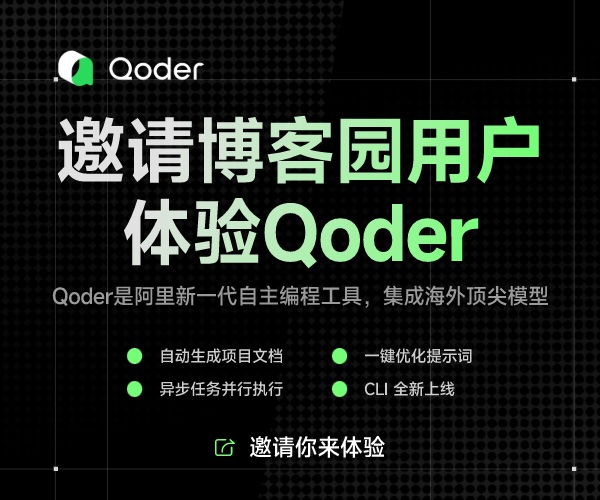對于c++中常量成員函數,返回常量引用,const_cast的總結
常量成員函數:
先看這個例子
bool Sales_item::same_isbn(const Sales_item &rhs) const
{ return (isbn rhs.isbn);}
藍色的const用于修飾顯示傳入的形參rhs,而對于類的成員則有隱式的,而外的this指針作為形參傳入,而紅色部分的const正是修飾這部分參數this;
const 成員函數的引入
現在,可以理解跟在Sales_item 成員函數聲明的形參表后面的const 所起的作用了: const改變了隱含的this 形參的類型。在調用total.same_isbn(trans) 時,隱含的this 形參將是一個指向total 對象的const Sales_item*類型的指針。就像如下編寫same_isbn 的函數體一樣:
 / / pseudo-code illustration of how the implicit this pointer is used
/ / pseudo-code illustration of how the implicit this pointer is used
 / / This code is illegal: We may not explicitly define the this pointer ourselves
/ / This code is illegal: We may not explicitly define the this pointer ourselves
 / / Note that this is a pointer to const because same_isbn is a const member
/ / Note that this is a pointer to const because same_isbn is a const member
 bool Sales_item::same_isbn(const Sales item *const this ,const Sales_item &rhs) const
bool Sales_item::same_isbn(const Sales item *const this ,const Sales_item &rhs) const


 { return (this->isbn rhs.isbn);}
{ return (this->isbn rhs.isbn);}
用這種方式使用const 的函數稱為常量成員函數(const member function) 。由于this 是指向const 對象的指針,const 成員函數不能修改調用該函數的對象。因此,函數avg-price
和函數sarne isbn 只能讀取而不能修改調用它們的對象的數據成員。
NOTE:
const對象指向const的指針或引用只能用于調用其const成員函數如果嘗試用它們來調用非const 成員函數,則是錯誤的。
返回常量引用:
在看一個例子:
1 mycls const& returntest()//定義返回值為一個常量引用
mycls const& returntest()//定義返回值為一個常量引用
2

 {
{
3 mycls my1(3);
mycls my1(3);
4 cout<<"a in the func is"<<&my1<<endl;
cout<<"a in the func is"<<&my1<<endl;
5 return my1;
return my1;
6 }
}
7 int _tmain(int argc, _TCHAR* argv[])
int _tmain(int argc, _TCHAR* argv[])
8

 {
{
9 //測試返回引用類型
//測試返回引用類型
10 mycls const&str = returntest();//使用cont&接受返回值
mycls const&str = returntest();//使用cont&接受返回值
11 //str.m_q=12;//編譯報錯,不可以修改const類型
//str.m_q=12;//編譯報錯,不可以修改const類型
12 mycls &str1=const_cast<mycls&>(str);//去掉const屬性,以便修改
mycls &str1=const_cast<mycls&>(str);//去掉const屬性,以便修改
13 str1.m_q=12;
str1.m_q=12;
14 cout<<"&b="<<&str<<endl;
cout<<"&b="<<&str<<endl;
15 cout<<"&b="<<&str1<<endl;
cout<<"&b="<<&str1<<endl;
16 system("pause");
system("pause");
17 return 0;
return 0;
18 }
}
 mycls const& returntest()//定義返回值為一個常量引用
mycls const& returntest()//定義返回值為一個常量引用2


 {
{3
 mycls my1(3);
mycls my1(3);4
 cout<<"a in the func is"<<&my1<<endl;
cout<<"a in the func is"<<&my1<<endl;5
 return my1;
return my1;6
 }
}7
 int _tmain(int argc, _TCHAR* argv[])
int _tmain(int argc, _TCHAR* argv[])8


 {
{9
 //測試返回引用類型
//測試返回引用類型10
 mycls const&str = returntest();//使用cont&接受返回值
mycls const&str = returntest();//使用cont&接受返回值11
 //str.m_q=12;//編譯報錯,不可以修改const類型
//str.m_q=12;//編譯報錯,不可以修改const類型12
 mycls &str1=const_cast<mycls&>(str);//去掉const屬性,以便修改
mycls &str1=const_cast<mycls&>(str);//去掉const屬性,以便修改13
 str1.m_q=12;
str1.m_q=12;14
 cout<<"&b="<<&str<<endl;
cout<<"&b="<<&str<<endl;15
 cout<<"&b="<<&str1<<endl;
cout<<"&b="<<&str1<<endl;16
 system("pause");
system("pause");17
 return 0;
return 0; 18
 }
}以上mycls是我自己定義的一個類,聲明如下
1 class mycls
class mycls
2

 {
{
3 public:
public:
4 mycls(int a);
mycls(int a);
5 char a[100000];
char a[100000];
6 //~mycls(void);
//~mycls(void);
7 int m_q;
int m_q;
8 template <class T> inline int compare(const T &a,const T &b)
template <class T> inline int compare(const T &a,const T &b)
9

 {
{
10 if(a == b)
if(a == b)
11 return 0;
return 0;
12 else if(a > b)
else if(a > b)
13 return 1;
return 1;
14 else if(a<b)
else if(a<b)
15 return -1;
return -1;
16 return 0;
return 0;
17 }
}
18 mycls& operator+(mycls a);
mycls& operator+(mycls a);
19 virtual int dosomething(int a);
virtual int dosomething(int a);
20 virtual void doanotherthing(void);
virtual void doanotherthing(void);
21 };
};
22
通過代碼注釋,我想這不難理解,用一個引用類型的返回值最大好處就是可以避免內存拷貝,注意到我的類中有一個長度為100000的char數組,我想頻繁拷貝這個數組對于一下性能較低的機器還是很耗時的,這時我們返回const &類型,避免了文件的拷貝,從輸出也可以看到,returntest函數內的對象地址與main函數內所返回的引用對象地址完全一致。
 class mycls
class mycls2


 {
{3
 public:
public:4
 mycls(int a);
mycls(int a);5
 char a[100000];
char a[100000];6
 //~mycls(void);
//~mycls(void);7
 int m_q;
int m_q;8
 template <class T> inline int compare(const T &a,const T &b)
template <class T> inline int compare(const T &a,const T &b)9


 {
{10
 if(a == b)
if(a == b)11
 return 0;
return 0;12
 else if(a > b)
else if(a > b)13
 return 1;
return 1;14
 else if(a<b)
else if(a<b)15
 return -1;
return -1;16
 return 0;
return 0;17
 }
}18
 mycls& operator+(mycls a);
mycls& operator+(mycls a);19
 virtual int dosomething(int a);
virtual int dosomething(int a);20
 virtual void doanotherthing(void);
virtual void doanotherthing(void);21
 };
};22

posted on 2008-12-04 17:08 pear_li 閱讀(3488) 評論(4) 編輯 收藏 引用 所屬分類: C++


